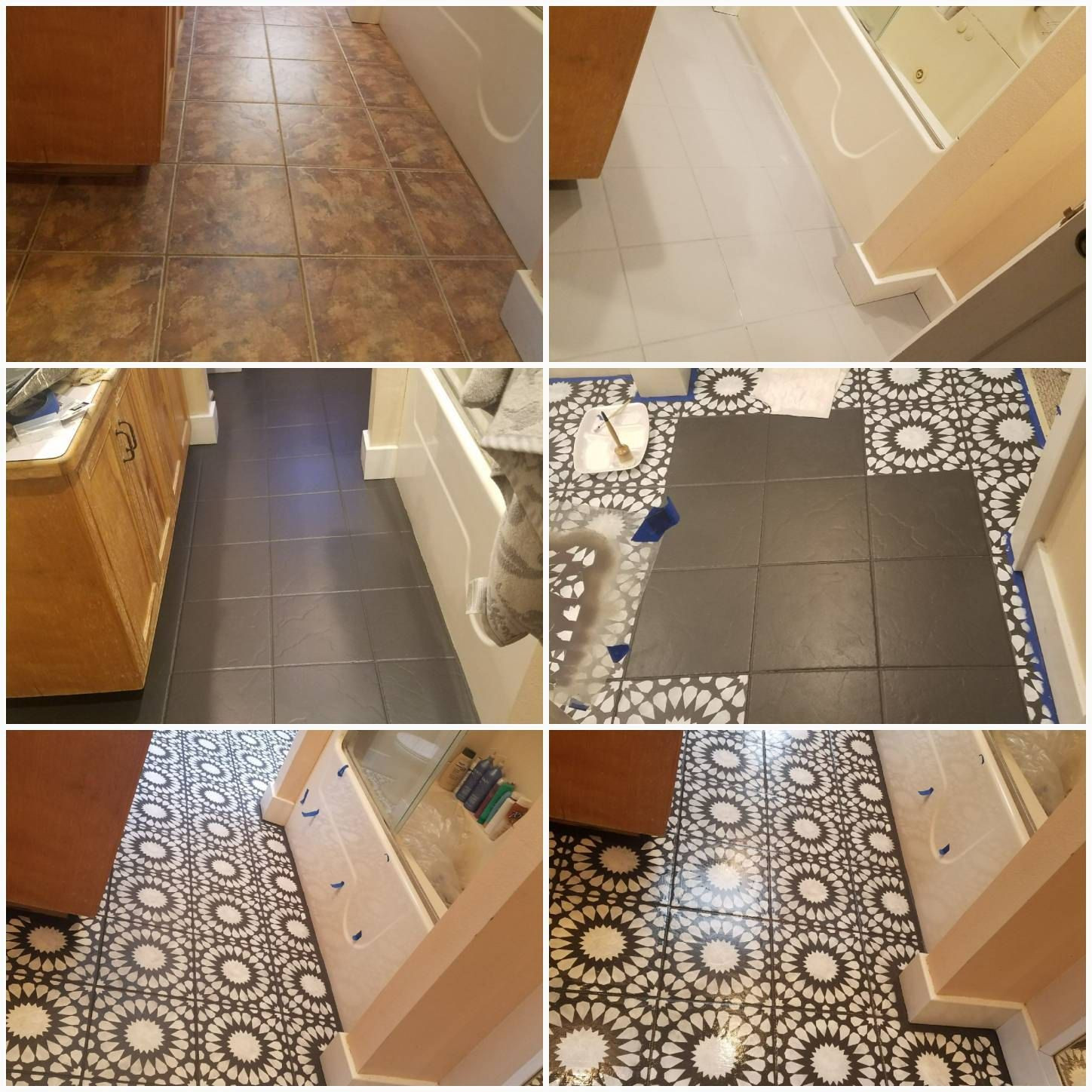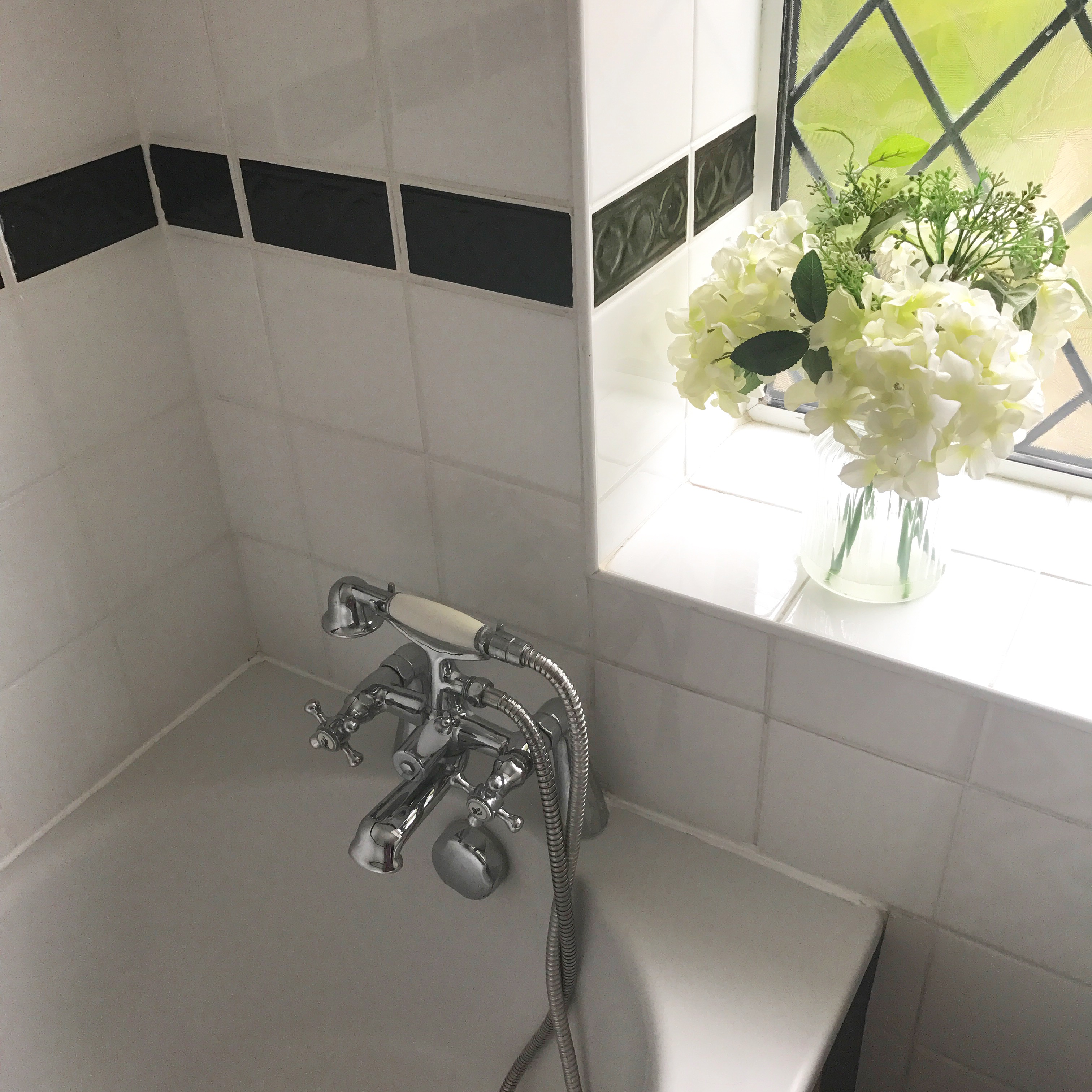The Art of Painting Ceramic Bathroom Fixtures

Transforming the look of your bathroom doesn’t always require a complete overhaul. Painting ceramic bathroom fixtures, such as sinks, tubs, and toilets, can be a cost-effective and creative way to refresh your space. This technique allows you to customize your bathroom to your unique style and preferences, whether you’re going for a modern minimalist look or a vintage-inspired aesthetic.
The History and Evolution of Painting Ceramic Bathroom Fixtures
Painting ceramic bathroom fixtures has been a practice for decades, evolving alongside advancements in paint technology. Early attempts often involved using oil-based paints, which lacked the durability and water resistance required for bathroom environments. The development of epoxy paints in the 1970s revolutionized the process, offering significantly improved adhesion, water resistance, and longevity. Today, specialized ceramic-specific paints are readily available, providing a wide range of color options and finishes.
Types of Paint Suitable for Ceramic Bathroom Fixtures
Choosing the right paint is crucial for a successful and long-lasting finish. Here are some popular options:
- Epoxy paints: These two-part paints, consisting of a resin and a hardener, offer exceptional durability, water resistance, and chemical resistance. They are ideal for high-traffic areas and surfaces exposed to moisture and cleaning products. Epoxy paints come in various colors and finishes, including gloss, semi-gloss, and matte.
- Acrylic paints: Water-based acrylic paints are a popular choice for bathroom fixtures, offering good adhesion, water resistance, and a wide range of color options. They are easier to apply and clean up than epoxy paints, making them suitable for DIY projects. Acrylic paints are available in matte, semi-gloss, and gloss finishes.
- Ceramic-specific paints: These paints are specifically formulated for ceramic surfaces, offering excellent adhesion, durability, and water resistance. They are designed to withstand the harsh conditions of a bathroom environment and are available in a wide range of colors and finishes.
Preparing a Ceramic Bathroom Fixture for Painting
Proper preparation is essential for a successful paint job. Here’s a step-by-step guide:
- Cleaning: Begin by thoroughly cleaning the ceramic surface with a degreaser or a solution of warm water and dish soap. This removes any dirt, grime, or soap residue that can interfere with paint adhesion.
- Sanding: Lightly sand the surface with fine-grit sandpaper to create a rough texture that helps the paint adhere better. Focus on any imperfections or areas with uneven surfaces.
- Priming: Apply a primer specifically designed for ceramic surfaces. The primer creates a barrier between the paint and the ceramic, improving adhesion and preventing the paint from peeling or chipping.
Applying Paint to Ceramic Bathroom Fixtures
Applying paint to ceramic bathroom fixtures requires patience and attention to detail. Here are some techniques:
- Brushwork: Use a high-quality brush with synthetic bristles designed for painting ceramic surfaces. Apply thin, even coats of paint, working in small sections to ensure complete coverage.
- Roller application: A roller can be used for large surfaces like tubs and shower walls. Choose a roller with a nap length suitable for the surface texture. Apply paint in smooth, even strokes, avoiding drips or runs.
- Spray painting: Spray painting offers a fast and even application, especially for intricate details. Use a spray gun designed for ceramic paints and follow the manufacturer’s instructions for proper application.
Achieving Various Finishes on Ceramic Bathroom Fixtures
Experiment with different techniques to create unique finishes:
- Matte finish: Matte paints provide a flat, non-reflective surface, which can create a sophisticated and understated look.
- Gloss finish: Gloss paints offer a shiny, reflective surface that adds a touch of elegance and can make the bathroom appear larger.
- Textured effects: Create interesting textures by using sponges, rags, or other tools to apply paint. For example, a sponge can be used to create a faux stone effect.
Design Considerations for Painted Bathroom Fixtures

Painting bathroom fixtures can be a fun and budget-friendly way to give your bathroom a fresh, updated look. But before you start painting, it’s important to consider the design style of your bathroom and the overall look you’re trying to achieve.
Here’s a breakdown of design considerations for painted bathroom fixtures:
Popular Design Styles
The design style of your bathroom will influence the color palette, patterns, and textures you choose for your painted fixtures.
- Contemporary: Contemporary bathrooms often feature clean lines, minimalist décor, and a neutral color palette. For contemporary fixtures, consider using sleek, modern colors like black, white, gray, or metallics. You can also incorporate geometric patterns or textures.
- Traditional: Traditional bathrooms are known for their elegant and timeless designs. For traditional fixtures, choose classic colors like white, cream, or soft pastels. You can also add intricate details like floral patterns or raised molding.
- Farmhouse: Farmhouse bathrooms are characterized by their rustic charm and natural materials. For farmhouse fixtures, consider using warm, earthy colors like brown, beige, or green. You can also incorporate distressed finishes or farmhouse-inspired patterns.
- Industrial: Industrial bathrooms often feature exposed brick, metal accents, and a raw, unfinished look. For industrial fixtures, use dark, bold colors like black, gray, or navy. You can also add industrial-inspired patterns like geometric shapes or metal accents.
Color Palettes and Combinations, Painting ceramic bathroom fixtures
The right color palette can make or break your painted bathroom fixtures. Consider the lighting in your bathroom and the overall design scheme when choosing colors.
- Light and airy: For a light and airy bathroom, use light and bright colors like white, cream, or pastel blue.
- Warm and inviting: For a warm and inviting bathroom, use warm colors like beige, brown, or yellow.
- Bold and dramatic: For a bold and dramatic bathroom, use dark colors like black, navy, or charcoal.
- Accent colors: You can also use accent colors to add pops of personality to your bathroom. Consider using bright colors like red, orange, or green for towels, rugs, or artwork.
Painted Fixture Designs
Get creative with your painted bathroom fixtures by incorporating different patterns, textures, and decorative elements.
- Stencils: Stencils are a great way to add patterns to your bathroom fixtures. You can find stencils in a variety of designs, from simple geometric shapes to intricate floral patterns.
- Decals: Decals are another great option for adding patterns and designs to your bathroom fixtures. You can find decals in a variety of styles, including vintage, modern, and whimsical.
- Textures: You can also create texture on your bathroom fixtures using techniques like sponging, distressing, or layering paint.
Integrating Painted Fixtures into Bathroom Design
Painted bathroom fixtures can be integrated into various bathroom layouts and design schemes.
- Matching or contrasting colors: You can paint your fixtures to match the walls or choose contrasting colors to create a focal point.
- Adding a pop of color: Paint your fixtures a bold color to add a pop of personality to a neutral bathroom.
- Creating a cohesive look: Paint your fixtures to match other elements in your bathroom, such as towels, rugs, or artwork.
Common Mistakes to Avoid
Painting bathroom fixtures can be a rewarding project, but there are a few common mistakes to avoid.
- Uneven coverage: Ensure you apply paint evenly to avoid streaks or blotches.
- Color fading: Use high-quality paint and a sealant to prevent color fading.
- Peeling paint: Properly prepare your fixtures by cleaning and sanding them before painting.
Practical Applications and Inspiration

Painting ceramic bathroom fixtures offers a unique way to transform your bathroom space into a haven of personalized style and functionality. This practice provides a cost-effective alternative to replacing outdated fixtures, allowing you to create a unique and aesthetically pleasing environment.
Benefits of Painting Ceramic Bathroom Fixtures
Painting ceramic bathroom fixtures presents a multitude of benefits, including cost savings, customization, and aesthetic enhancements. This process can breathe new life into outdated fixtures, transforming a mundane bathroom into a stylish and inviting space.
- Cost Savings: Painting existing fixtures is significantly more budget-friendly than replacing them entirely. This approach allows you to achieve a fresh look without breaking the bank, especially when dealing with multiple fixtures.
- Customization: The ability to choose colors and finishes provides endless possibilities for personalized expression. You can create a unique look that perfectly complements your bathroom’s overall design, from bold and vibrant to subtle and elegant.
- Aesthetic Enhancements: Painting can revitalize the appearance of worn-out fixtures, hiding scratches, chips, and discoloration. A fresh coat of paint can make even the most outdated fixtures look modern and stylish.
Painted Bathroom Fixtures in Different Spaces
The versatility of painted bathroom fixtures extends to various spaces within your bathroom, offering a seamless integration of style and functionality.
- Showers: Painting shower stalls and enclosures allows for a personalized touch, transforming them into a relaxing oasis. You can create a calming ambiance with soft pastels or add a touch of vibrancy with bold colors.
- Bathtubs: Painting bathtubs can create a spa-like experience, adding a touch of luxury and elegance. You can opt for classic white or explore more daring color choices to match your bathroom’s theme.
- Sinks: Painting bathroom sinks can revitalize their appearance and create a focal point in your bathroom. You can choose a color that complements the countertop or opt for a bold statement piece.
- Toilets: Painting toilets may seem unconventional, but it can be a creative way to refresh their appearance. You can choose a color that blends seamlessly with the other fixtures or create a unique accent piece.
Inspirational Examples of Painted Bathroom Fixtures
Numerous real-world examples showcase the transformative power of painting ceramic bathroom fixtures, highlighting the diverse range of styles, colors, and design choices available.
- Modern Minimalism: A white bathroom with a sleek, modern design can be enhanced by painting the shower enclosure in a light gray or a subtle shade of blue, creating a calming and minimalist aesthetic.
- Rustic Charm: A bathroom with a rustic feel can be enhanced by painting the bathtub in a warm, earthy tone like terracotta or sage green, complementing the natural wood accents and creating a cozy ambiance.
- Bold Statement: A contemporary bathroom with a bold and eclectic design can be transformed by painting the sink in a vibrant color like turquoise or coral, adding a striking focal point to the space.
Visual Guide to Transforming Bathroom Fixtures
Before: Imagine a bathroom with outdated, worn-out ceramic fixtures, lacking a sense of style and freshness. The bathtub may be chipped and discolored, the shower stall may have faded grout, and the sink may have lost its shine.
After: Through the art of painting, these fixtures are transformed into a cohesive and stylish design element. The bathtub is painted in a soft, creamy white, restoring its original elegance. The shower stall is painted in a crisp, clean white, creating a sense of spaciousness. The sink is painted in a deep, rich gray, adding a modern touch to the space.
This visual guide showcases the dramatic impact of painting on the appearance and feel of a bathroom space. It highlights how a simple coat of paint can revitalize outdated fixtures and create a personalized haven.
